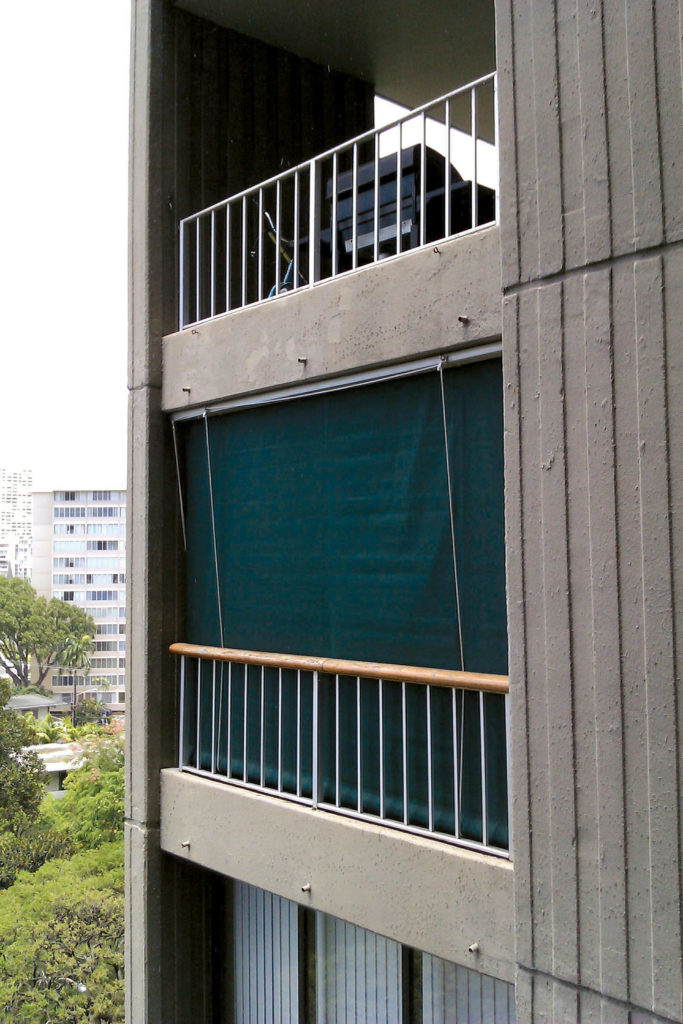When it comes to protecting structures from the elements, fabric has it covered.
by Jeff Moravec
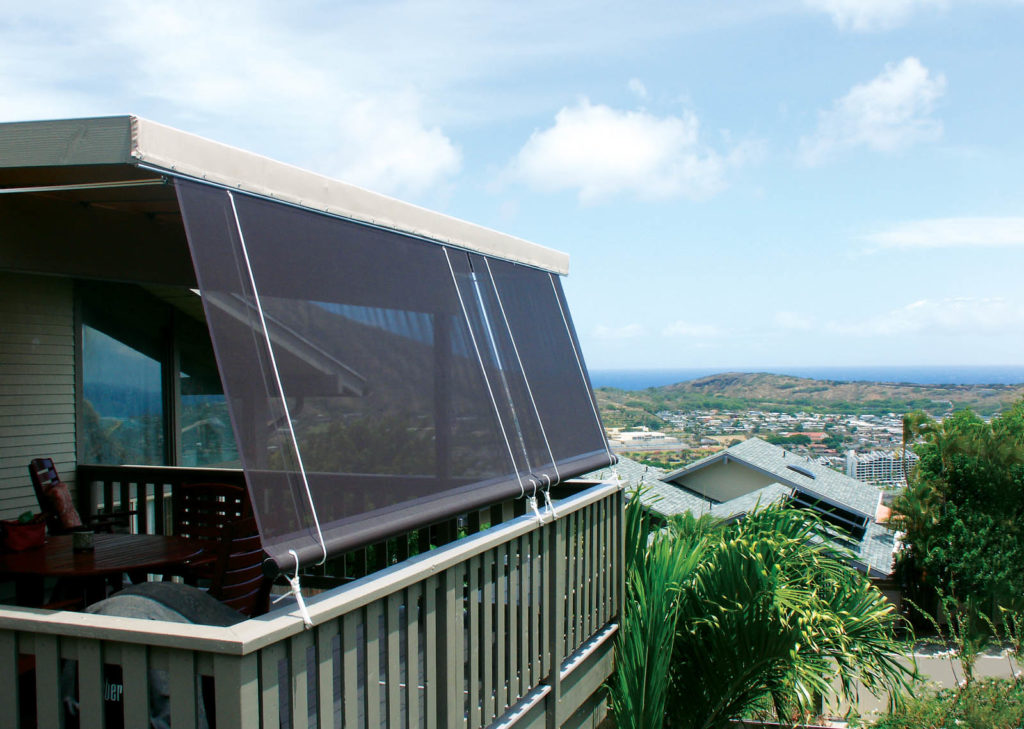
Fabric serves an unending variety of needs, but sometimes overlooked is its role in protecting us from the dangers of our natural world. Here’s a snapshot of several companies and their products that have been designed to protect structures from the wrath of Mother Nature.
Extreme cold protection
Serge Ferrari, with its U.S. headquarters in Deerfield Beach, Fla., is known globally for manufacturing highly durable composite materials for a variety of uses and extreme conditions. But, according to Ilse Beterams, the company’s vice president of North America, “We also have one of the most adaptive and experienced R&D teams that finds specific solutions for customers and, at the same time, brings new innovations to the industry.”
Two examples where Serge Ferrari met the expected extreme weather demands of customers are a modular structure in Greenland and rolling truck tarps in Canada.
According to Beterams, Serge Ferrari customer RUBB USA was awarded a project to create a modular structure that could withstand some of the most extreme conditions on the globe: the summit of the Greenland ice sheet.
“This temperature-controlled storage structure for the Greenland Environmental Observatory, National Science Foundation, needed to withstand temperatures from 14°F in summer to as low as -49°F in winter,” explains Beterams. Because the area receives up to 120 inches of snowfall per year, she says, the structure had to be durable enough to withstand regular movement to keep it from being buried.
RUBB USA created a double-skin modular structure, with Serge Ferrari’s Precontraint® 932 S2 (now named Flexlight Perform 932) as the exterior wall, a dimensionally stable, tear-resistant composite material able to withstand temperatures as low as -60°F, and Serge Ferrari’s Precontraint 412 (now named Flexlight® Thermic 412 Opaque) for the interior wall, a light blocking material. A special 8-inch-thick insulating blanket, Rubb Thermohall, was installed in the pocket between the Serge Ferrari walls to keep the interior from freezing. A generator-driven lighting and heating system was also installed.
Serge Ferrari offers Protect Cover 705, a dimensionally stable, tear-resistant high-density polyester material for rolling tarp and Conestoga-style truck tarp systems, says Beterams.
“While this product works great in most conditions, we discovered from a customer that it was cracking in the extreme cold of Canadian winters,” she says. “So the Serge Ferrari R&D team developed a low-temperature version, Protect Cover 705LT, which withstands temperatures as low as -58°F. Our customer has been extremely happy with the performance of this new tarp material.”
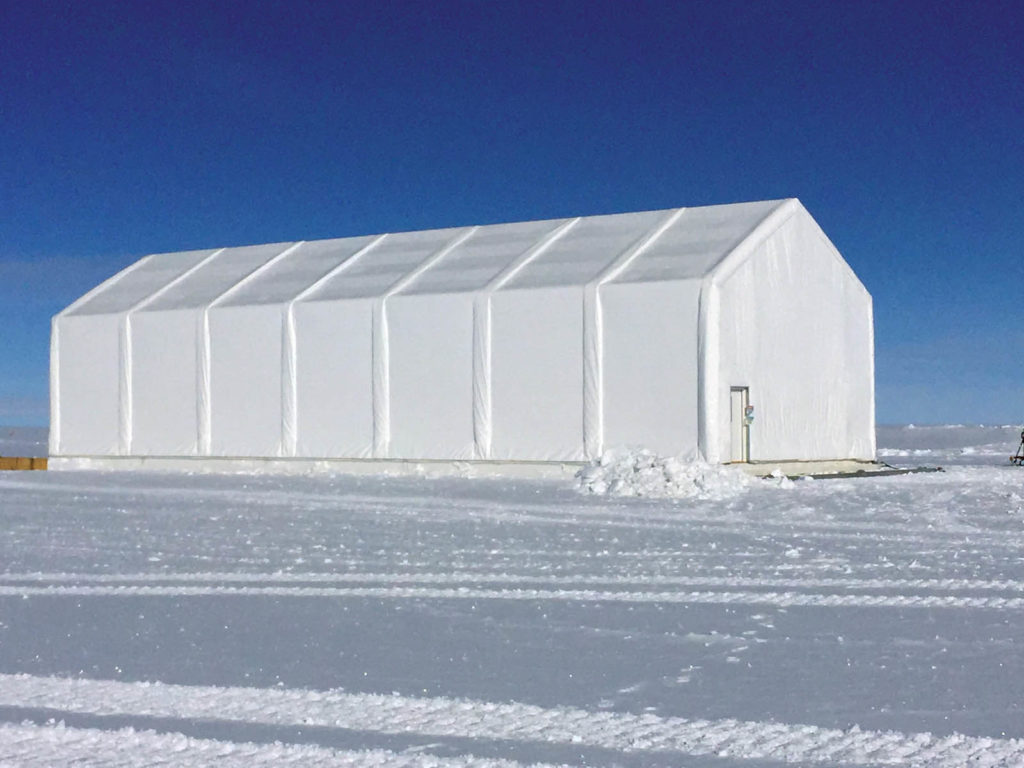
Rain defense
Hawaii is often viewed as some version of paradise. At the same time, according to Gary Barnes, co-owner of Tropical J’s Inc., an awning and umbrella company in Honolulu, “Our weather is more fickle than most think. We do have some great temperatures and cooling mauka [mountain] showers and trade winds, but weather can turn quite nasty rather quickly. A light cooling sprinkle can come and go in a matter of minutes, destroying a beautiful outdoor buffet.”
One of Tropical J’s lines of business is exterior curtains made for rain protection. “Our primary challenge here is providing that protection for anything from a light shower to a heavy wind and rainstorm blowing at 60 mph that, when possible, doesn’t deny access to a beautiful starlit evening,” says Barnes. “Only fabric can provide that flexibility.
“If someone comes in and says they are looking for wind protection, we advise them that the only curtain we’ve really found that works is manual roll-down, the rope and pulley system,” says Barnes. “We can pull those down and lock them tight. We have not had foolproof performance with several types of tracked systems in Hawaii’s unpredictable and quickly changing weather systems. They work if the wind is blowing and the curtain is down, but most customers with track systems don’t decide to put them down to protect themselves until it’s too late.
“Those systems tend to bind in their tracks when the wind is blowing hard and the curtain is under load,” explains Barnes. “If you try to operate the motor while the curtain is bound in the track, you might find significant damage to either the curtain or the part of the building it is attached to—so if you’re pulling it up, it can either cause the track to separate from the wall or cause damage to the mechanism, or if you’re trying to deploy it, it binds up and then the fabric rolls up in the hood above the track, which can result in a major service call.”
Tropical J’s rope and pulley systems are made from a wide variety of solid vinyls, acrylics such as Sunbrella®, mesh material or even clear vinyl. When in use, the systems are fully deployed and tied to set anchor points.
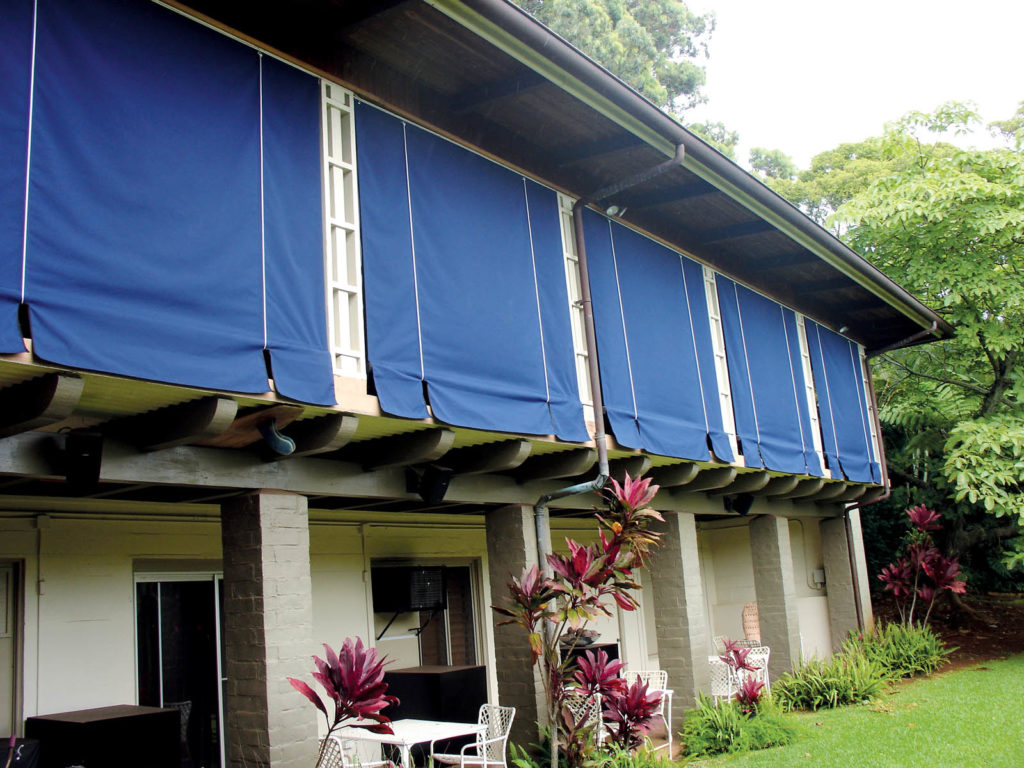
Flood mitigation
ILC Dover, based in Frederica, Del., is widely known for producing spacesuits for NASA for more than 50 years. “But we’ve leveraged that expertise into some pretty spectacular things with film and fabric,” says director of marketing Dan Klopp—including products for flood protection.
Klopp says the company entered the flood protection market in recent years “through kind of a circuitous route.” According to Klopp, “It’s wasn’t a strategic move; we were brought in by a customer. But we’ve found an ever-growing need.”
ILC Dover produces a wide range of flood protection products, including gate, wall, cover and plug systems. “Ours are different than most,” says Klopp. “The vast majority out there are some sort of rigid barrier, either aluminum or steel, typically stainless steel. We approach it with a soft fabric structure.”
Klopp says fabric structures are lighter weight and their flexibility makes it easier for them to be stored when not in use. “They also have a higher resistance to impact, which on the surface may look counterintuitive,” he says. “But our structural layer is made from Kevlar® webbing, which pound for pound is five to 10 times stronger than steel.
“The fact that it is soft gives it an additional advantage,” he adds. “In floods, there are two problems. The first one is holding back the water, but the second one is actually more insidious—being able to withstand floating debris in the water. Ours are far superior to rigid barriers when it comes to being able to withstand those impact loads, on top of hydrostatic loads.”
Typically, when a rigid barrier takes an impact load, it will bend and kink, and the gaskets will pull away from whatever they are sealed against, explains Klopp. “Then it starts leaking really badly,” he says. “With a soft structure, the fabric gives and spreads out the impact over a few more milliseconds, thereby decreasing the point load and also not pulling gaskets away.”
ILC Dover’s systems are typically made in two layers, according to Klopp. The water retention layer is a simple PVC-coated polyester fabric that is completely independent of the second layer, which is Kevlar webbing, and is only loosely attached to keep it from sliding around.
“The water retention layer is not under tension. All the load is taken through the Kevlar webbing, which is on the dry side of the system,” says Klopp. “If there is floating debris, maybe with a really sharp edge, any puncture that may happen doesn’t propagate because the fabric’s not under tension. If the water retention layer was stretched really tight, a small tear could propagate and result in a large rip. In our system, there will be only small leakage at most.”
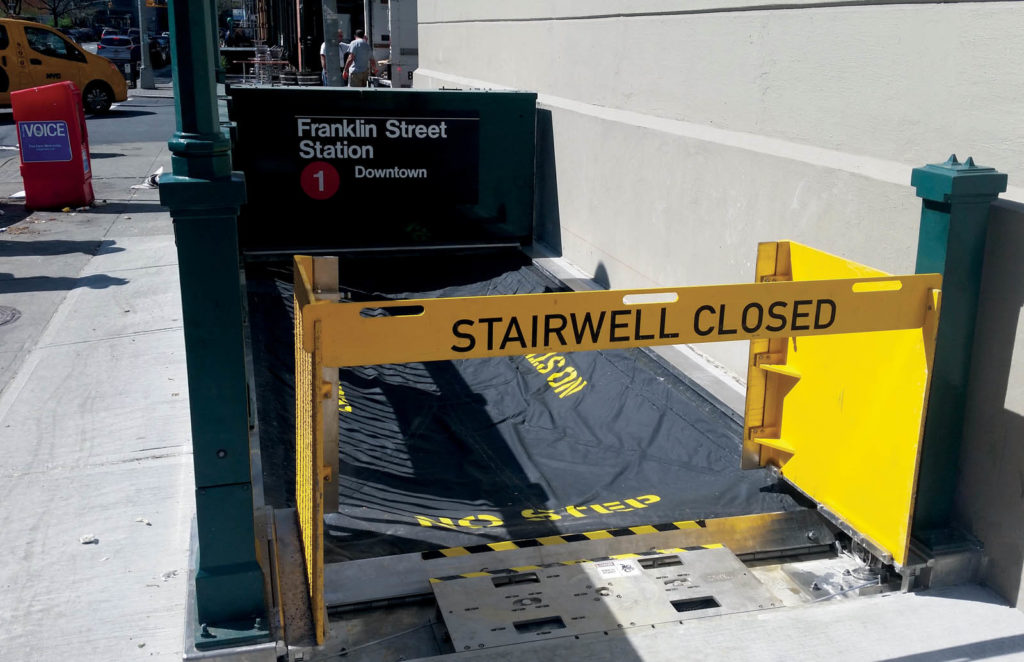
Portable water control
“All we do is control water,” says Timothy McTigue of Portadam Inc., the Williamstown, N.J., company where he serves as director of business development.
Portadam offers water storage systems, cofferdams and a variety of flood control products. But when it comes to flood control, says McTigue, it’s not the products themselves that Portadam uses to differentiate itself from the competition—it’s the company’s emphasis on custom solutions for each client. “We look at each job as a one-off,” he explains. “Each job has its own challenges, unique features and different conditions on-site.”
McTigue says customers work with Portadam to design a system based on their needs, with flood barriers ranging from 16 inches to 12 feet high. The system—faster and easier to install than sandbags and other labor-intensive products—is built and then stored near where it would be needed in an emergency. A typical customer? “A large power utility on the East Coast purchased several separate systems to protect power substations that had experienced flooding in the past,” he says. “Usually the reason that power goes out in a flood is that the substation got flooded—they needed protection to keep the power on in the community.”
The systems are generally made with reinforced PVC, says McTigue. A system composed of 164 linear feet of 40-inch height protection can be stored in a single 4-by-5-by-4-foot portable, stackable crate and deployed in less than 30 minutes.
While McTigue says potential customers are more aware these days of the increasing possibility of flooding, it can be tough to sell systems to places that have not already had problems, even if an ounce of prevention may be worth a pound of cure. “More times than not they have already experienced some level of flooding before they call us,” he says. “It’s the old adage, ‘It’s not a problem until it’s a problem.’”
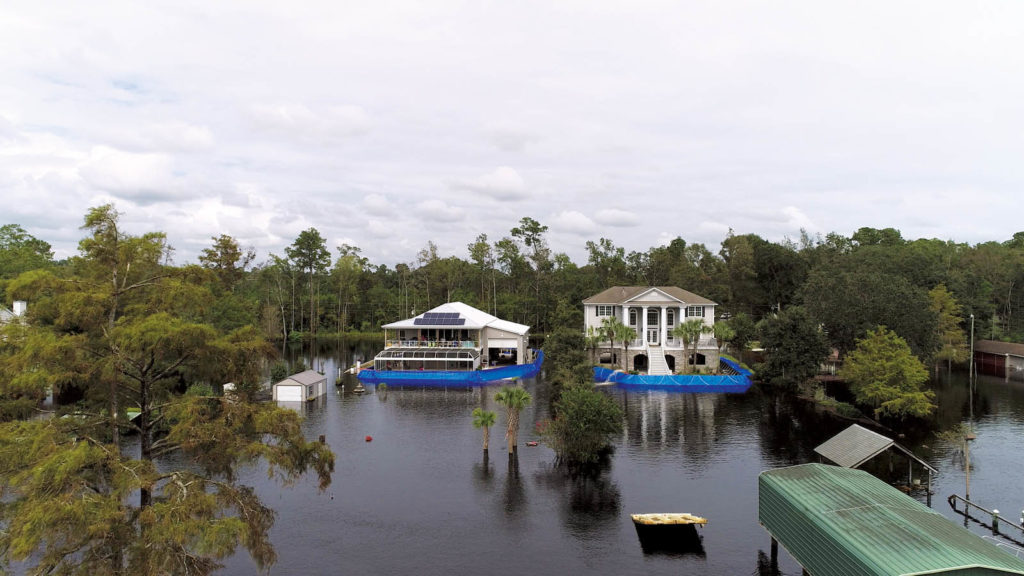
Hurricane resistance
Brian Trecek, one of the owners of Naples Shutter in Naples, Fla., says older residents of the community face a problem when it comes to hurricane shutters—metal panels are too difficult for them to deploy in a hurry, and roll-down systems are too expensive. The solution? Fabric.
“We sell AstroGuard Hurricane Fabric,” Trecek says. “It’s a meshed nylon that has a coated resin over the top that allows it to be rated for 200 mph hurricane protection. The majority of the people in Naples are over 65, and this is by far the easiest system to deploy.
“If you have to go out with a hurricane bearing down on you and try to get metal panels up, it’s crazy,” he says. “It’s just too hard to do.”
The flexibility of fabric also makes a difference if debris is flying into the cover, according to Trecek. “It’s like a trampoline—it just keeps bouncing back. Otherwise, if something breaks through and the wind gets in, you risk the roof of the house coming right off.”
Some fabric shutters are made with polypropylene, which is strong enough in a hurricane, but if left out will be weakened by sun exposure, he says. AstroGuard’s resin coating protects it against UV damage.
While the wrath of Mother Nature has the potential to wreak havoc on existing structures, fabric is one solution that stands ready to weather the storm.
Jeff Moravec is a freelance writer from Minneapolis, Minn.
SIDEBAR: The right material goes a long way
When choosing a material for a project, you not only need to consider the typical conditions that material will be exposed to, but also the atypical, such as a hurricane or flood,” says Ilse Beterams, vice president of Serge Ferrari North America, which has its U.S. headquarters in Deerfield Beach, Fla. “Choosing a high-quality product increases the probability the material will withstand whatever extreme condition it faces.”
One example is the parking garage screen at Miami Midtown 5, a luxury apartment building in downtown Miami, Fla. Some years ago, Serge Ferrari’s Frontside® View 381, a mesh for textile facades, was installed at the garage.
“Just after it was installed by Structurflex, Hurricane Irma came barreling through with winds in that area up to 100 mph,” says Beterams. “Serge Ferrari visited the project afterwards and spoke with the on-site facility manager. Although the building encountered some water leaks around windows and from its roof, it experienced no damage to its tensile mesh screen.”
 TEXTILES.ORG
TEXTILES.ORG



